
The Qara Qoyunlu or Kara Koyunlu, also known as the Black Sheep Turkomans, were a culturally Persianate, Muslim Turkoman monarchy that ruled over the territory comprising present-day Azerbaijan, Georgia, Armenia, northwestern Iran, eastern Turkey, and northeastern Iraq from about 1374 to 1468.

Shah Rukh or Shahrukh Mirza was the ruler of the Timurid Empire between 1405 and 1447.

Muzaffar al-Din Jahan Shah ibn Yusuf was the leader of the Qara Qoyunlu Oghuz Turkic tribal confederacy in Azerbaijan and Arran who reigned c. 1438 – 1467. During his reign he managed to expand the Qara Qoyunlu's territory to its largest extent, including Eastern Anatolia, most of present-day Iraq, central Iran, and even eventually Kerman. He also conquered neighbouring states. He was one of the greatest rulers of the Qara Qoyunlu. He was also allegedly fond of drinking and entertainment. During his reign Jahan Shah had the Gökmedrese and Muzafferiye theological schools constructed in his capital city Tabriz.
The Battle of Chalagan was fought between the Qara Qoyunlu and the allied forces of Kingdom of Georgia, the Princedom of Simsim and Shirvanshah at Chalagan, Azerbaijan, in December 1412, and resulted in Qara Qoyunlu’s victory.

Sultan Husayn Bayqara Mirza was the Timurid ruler of Herat from 1469 until May 4, 1506, with a brief interruption in 1470.
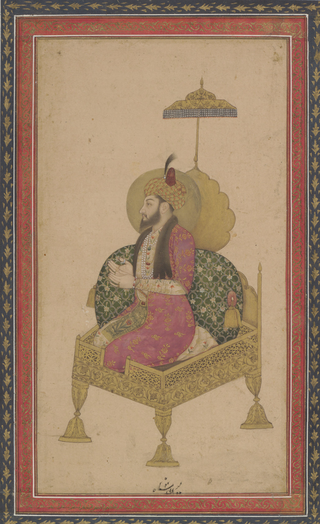
Mirza Jalal-ud-din Miran Shah Beg, commonly known as Miran Shah, was a son of the Central Asian conqueror Timur, founder of the Timurid Empire.
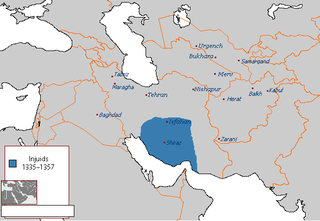
The Injuids were an Iranian dynasty of Persian origin that came to rule over the cities of Shiraz and Isfahan during the 14th century. Its members became de facto independent rulers following the breakup of the Ilkhanate until their defeat in 1357.

The Kart dynasty, also known as the Kartids, was a Sunni Muslim dynasty of Tajik origin closely related to the Ghurids, that ruled over a large part of Khorasan during the 13th and 14th centuries. Ruling from their capital at Herat and central Khorasan in the Bamyan, they were at first subordinates of Sultan Abul-Fateh Ghiyāṣ-ud-din Muhammad bin Sām, Sultan of the Ghurid Empire, to whom they were related, and then as vassal princes within the Mongol Empire. Upon the fragmentation of the Ilkhanate in 1335, Mu'izz-uddin Husayn ibn Ghiyath-uddin worked to expand his principality. The death of Husayn b. Ghiyath-uddin in 1370 and the invasion of Timur in 1381, ended the Kart dynasty's ambitions.

The Jalayirid Sultanate was a Mongol Jalayir dynasty which ruled over modern-day Iraq and western Iran after the breakup of the Mongol khanate of Persia in the 1330s. It lasted about fifty years, until disrupted by Timur's conquests and the revolts of the Qara Qoyunlu Turkoman. After Timur's death in 1405, there was a brief attempt to re-establish the sultanate in southern Iraq and Khuzistan. The Jalayirids were finally eliminated by the Qara Qoyunlu in 1432.

Abu NasrQara Yusuf ibn MohammadBarani was the ruler of the Qara Qoyunlu dynasty from c.1388 to 1420, although his reign was interrupted by Tamerlane's invasion (1400–1405). He was the son of Qara Mahammad Töremish, a brother-in-law to Ahmad Jalayir.
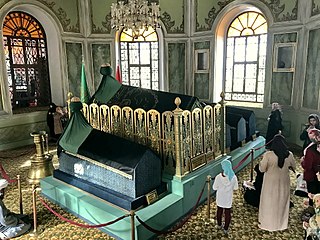
Amir Sultan or Emir Sultan was a well-known thinker in the world of Islam and mysticism (tasawwuf), who lived in Bursa during the early period of the Ottoman Empire. He was Amir Kulal Shamsuddin's grandson.
The Battle of Algami Canal was fought between Kara Koyunlu under their Bey, Qara Yusuf and the Timurid Empire under the leadership of Timur's grandson Abu Bakr bin Miran Shah for control of Baghdad and therefore Iraq in late 1402.

The Battle of Nakhchivan was fought between Kara Koyunlu under their Bey, Qara Yusuf and the Timurid Empire under the leadership of Timur's grandson Abu Bakr ibn Miran Shah, for control of Azerbaijan on October 14, 1406. Qara Yusuf decisively defeated the Timurids in this battle and took over Tabriz, the capital of the region.
Ispend, Aspand or Isfahan was the son of Qara Yusuf and ruled over Baghdad and its environs for twelve years.
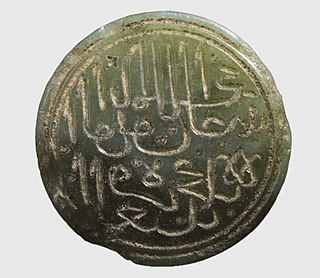
Qara Mahammad was a bey of the Qara Qoyunlu and father of Qara Yusuf.

Mu'iz-ud-din Umar Shaikh Mirza was a member of the Timurid dynasty and a son of its founder, the Central Asian conqueror Timur. Known for being a skilled soldier, Umar Shaikh was one of Timur's military commanders and also served as a regional governor. He died in 1394, predeceasing his father by over a decade.
Pir Muhammad Mirza was a Timurid prince and a grandson of the Central Asian conqueror Timur by his eldest son Umar Shaikh Mirza I.
Rustam Mirza was a Timurid prince and a grandson of the Central Asian conqueror Timur by his eldest son Umar Shaikh Mirza I.
The High Middle Ages, or Classic Feudalism Period in what constitutes the present-day Republic of Azerbaijan, lasted from around the 11th century to the 15th century AD. The High Middle Ages were preceded by the Early Middle Ages and were followed by the Late Middle Ages, which ended around the 15thcentury AD. Key historical trends of the High Middle Ages include the incorporation of the territories that constitute present-day Azerbaijan into the Seljuk Empire, the establishment of the Eldiguzids, the Mongol invasions and the rule of the Ilkhanate, the invasions of Timur and the establishment of the Turkoman Kara Koyunlu and Aq Qoyunlu tribal confederations.
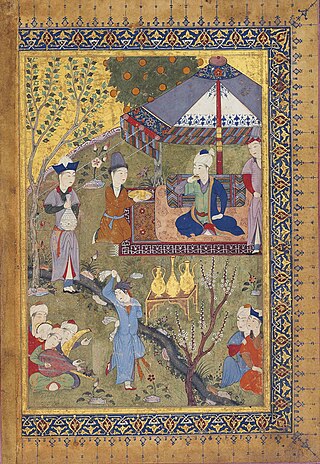
Abu'l-Fath Pir Budaq more commonly known simply as Pir Budaq, son of Jahān Shāh of the Qara Qoyunlu dynasty, was governor of Shiraz (1456-1460) and of Baghdad (1460-66) where he introduced a period of political and economic stability. He is noted for developing a library of the finest manuscripts, for his patronage of the arts, for establishing Baghdad as an important centre of the arts and for reinvigorating the art of the book. He has been described as the greatest Turkmen patron of the arts.













